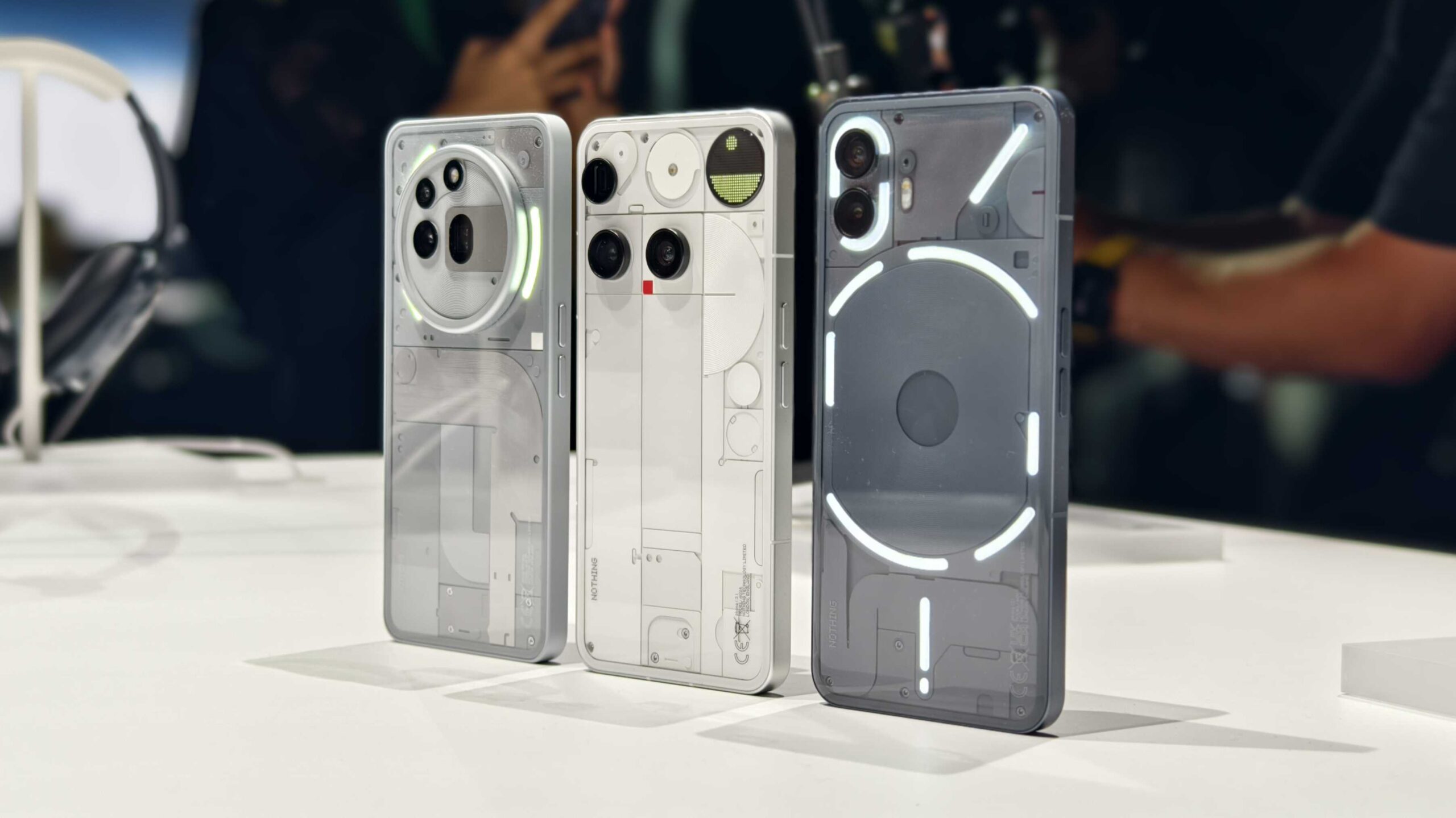The Made by Google event was very, very different this year. Hosted by Jimmy Fallon, the launch was more like an hour-long segment of The Tonight Show — his regular hosting gig — than any tech launch we’ve seen before. This was by design. Google wanted the launch of the Pixel 10 series to be for everyone, not just tech nerds. In that respect, it was a resounding success, with the stream currently sitting at 6.6 million views, as of me writing this sentence.
However successful it might have been, there’s no denying that Google neglected to talk about the nitty-gritty details of the phones. Don’t worry, though, because we’re here to fill you in on some of the most important gaps. Without further ado, let’s dive into the seven things about the Pixel 10 phones you didn’t hear about at Made by Google!
Three of the US models lack SIM card trays
Rita El Khoury / Android Authority
In the image above, you’ll see a Pixel 10 Pro with a SIM card slot at the top. The SIM card slot being here is, in itself, newsworthy, since it was on the bottom of the Pixel 9 series phones. However, the phone above is a French model. If you look at the top of a Pixel 10 Pro here in the US, you won’t find any SIM card tray slot at all.
If you live in the US and don’t want a foldable, the Pixel 10 phone you get won’t have a physical SIM tray.
This is because Google made the three slab phones — the Pixel 10, Pixel 10 Pro, and Pixel 10 Pro XL — eSIM only devices in the United States. For some reason, the Pixel 10 Pro Fold still has a physical SIM card slot globally.
I know that this will upset a lot of US buyers. Hardcore tech nerds usually own multiple phones, and love the ease of moving a SIM card from one device to another. This just isn’t as easy to do with eSIM. However, tech nerds are a minority, and 99% of Americans put a physical SIM card in their phone and then literally never touch it again, so they will be fine. That’s the audience Google is going after here, so it makes sense.
The speakers have been improved on all slab phones

C. Scott Brown / Android Authority
The speakers on Pixel phones have always sounded fine. They’ve never sounded great, though. Google must have recognized this, because it revamped the speaker systems on the three slab-style Pixel 10 phones.
On the standard Pixel 10, Google has upgraded the top speaker, promising better bass and overall sound quality. On the Pixel 10 Pro, Google did the same but also upgraded the bottom speaker, too.
The three slab phones get speaker upgrades, but the Pixel 10 Pro XL is the one with the biggest changes.
However, the biggest upgrade is for the Pixel 10 Pro XL. It got both the top and bottom speaker upgrades on the other two phones, but Google also gave it the “loudest and most powerful bass ever on a Pixel.” In other words, if you use your phone’s speaker system a lot, the Pixel 10 Pro XL is the phone for you.
Unfortunately, Google did not give us any specific info on speaker upgrades for the Pixel 10 Pro Fold. For now, we can only assume they are the same as what we saw on the Pixel 9 Pro Fold.
These are the first phones ever with Thread radios built in

C. Scott Brown / Android Authority
Smart home nerds will know all about Thread. Co-developed by Google, Samsung, and others, Thread is a low-power wireless mesh networking protocol designed to allow smart home and IoT devices to communicate directly with each other. In other words, it allows one device to connect to another without the need for Wi-Fi (or any internet connection at all).
Literally no other smartphone has a Thread radio in it, making the Pixel 10 phones quite notable.
Notably, all four Pixel 10 phones have Thread radios built right in. This is the first time that any smartphone has had this feature, which is very notable. However, this is the kind of geeky thing that wouldn’t have fit into the Made by Google event, so it’s no wonder it was skipped.
Anyway, with a Thread radio built into the phone, controlling your Thread-compatible smart home devices should be a breeze with a Pixel 10 phone. Instead of bouncing a command from your phone to a Thread border router and then to the device, your phone should just be able to send the command right to the device itself. This could be a significant upgrade, especially if you have a robust collection of smart home devices.
AV1 codec support is here for video recording

C. Scott Brown / Android Authority
Auto Best Take
On the Pixel phones released over the past few years, you’ve had a binary choice when it comes to the codec that processes your video captures: H.264/AVC or H.265/HEVC. The former is a widely-supported format that will work on pretty much any platform, while the latter allows for smaller file sizes but might not work on all platforms.
The AV1 codec will give you smaller file sizes when recording videos without impacting the quality of the videos themselves.
With the Pixel 10 series, you now have a third choice: AV1. This codec is even more efficient than H.265, allowing for even smaller file sizes with no perceptible loss in quality. This is great news as you’ll be able to capture more videos without taking up nearly as much storage space.
The problem, though, is that a lot of platforms and media players won’t support AV1 playback. This is why Google gives you the choice. If you buy a Pixel 10, make sure you pick the codec choice that’s right for you! To do this, open the Camera app, hit the gear icon on the left, tap More Settings, and scroll down to find the video codec selector.
The Pro models support wallpaper on the AOD

C. Scott Brown / Android Authority
In 2022, Apple introduced an always-on display (AOD) feature for the first time, exclusive to the iPhone 14 Pro and Pro Max. Although Android phones had supported AOD features long before that, Apple took things one step further by supporting wallpaper imagery on the AOD.
For the first time ever, you’ll be able to see your wallpaper on the AOD of a Pixel. Unfortunately, this only applies to two out of the four phones.
It wasn’t long before Samsung followed suit. It brought the same feature to the Galaxy S24 series in 2024. Pixels, though, have been left out of the fun — until now. The Pixel 10 Pro and Pixel 10 Pro XL support wallpapers on the AOD, which you can see above.
Unfortunately, the Pixel 10 and Pixel 10 Pro Fold do not have LTPO displays, so they can’t support wallpapers on the AOD. For wallpapers to work without significantly draining the battery, the display must be capable of going to a 1Hz refresh rate, which only applies to the 10 Pro and 10 Pro XL.
It will be interesting to see if this feature backports to older Pixels. The Pro models of the Pixel 9 series, the Pixel 8 Pro, and the Pixel 7 Pro have LTPO displays, so there’s no technical reason this couldn’t work. Time will tell.
OIS has been significantly improved

C. Scott Brown / Android Authority
OIS stands for optical image stabilization. It’s a technology that allows a camera lens to move in response to the phone’s physical movement, reducing the shake you see in shaky videos. Historically, this has been a sore spot for Pixel phones, especially when compared to the king of mobile video recording: the iPhone.
Hate that Pixel’s produce shaky videos? You’re going to love this upgrade.
Things have gotten better this year, though. Google says that the Pixel 10 Pro and Pixel 10 Pro XL have doubled the range of OIS on the primary lens. In theory, this should mean a drastic reduction in shakiness when recording video with the 50MP main lens on both phones.
We haven’t been able to put this to test yet, though, so don’t rush off to pre-order a Pixel 10 Pro just yet. We can’t imagine doubling the OIS range not making a huge difference, but we don’t want to make any claims until we can test it out for ourselves.
The Pixel 10 Pro XL has Qi2.2 support with fastest charging ever

Rita El Khoury / Android Authority
All four phones in the Pixel 10 series support Pixelsnap, the new magnetic connector built into the back of the devices. This is essentially Apple’s MagSafe technology transferred to Pixels, and we love it.
Not only can you snap inert accessories like wallets and ring stands to the phones, but you can also snap them onto wireless chargers. For the Pixel 10, Pixel 10 Pro, and Pixel 10 Pro Fold, this results in 15W charging speeds with Qi2-compatible chargers. For all three of those phones, this represents a bump in charging speeds compared to the Pixel 9 series.
Although all the Pixel 10 phones support Pixelsnap and magnetic wireless charging, the Pixel 10 Pro XL takes that to a new level.
However, the Pixel 10 Pro XL ups the ante. That phone supports Qi2.2, which allows for 25W wireless charging. This makes the Pixel 10 Pro XL the Pixel with the biggest battery ever, the fastest wired charging ever at 45W, and the fastest wireless charging ever. In other words, if battery life and charging speeds are most important to you, there is no better choice than the Pixel 10 Pro XL.
What are your favorite features about the Pixel 10 phones? Let us know in the comments below!
Thank you for being part of our community. Read our Comment Policy before posting.








